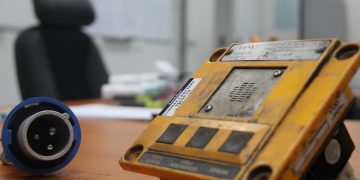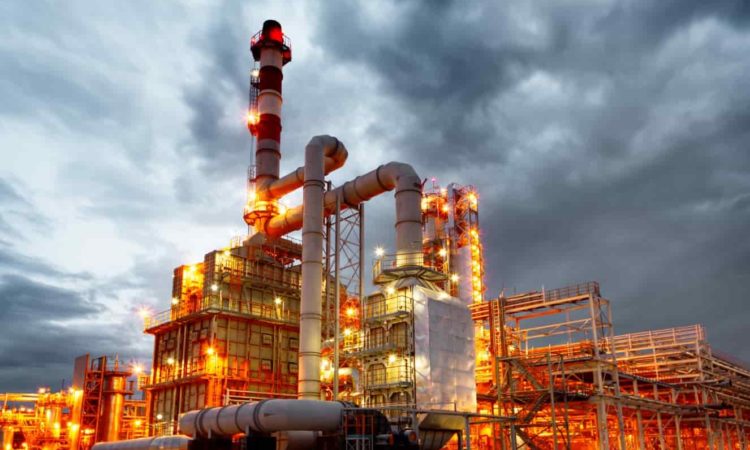Our Roar Solutions Diaries
Our Roar Solutions Diaries
Blog Article
Things about Roar Solutions
Table of Contents10 Simple Techniques For Roar SolutionsRoar Solutions for DummiesThe Buzz on Roar Solutions
In such an atmosphere a fire or explosion is possible when 3 standard problems are satisfied. This is typically referred to as the "dangerous location" or "burning" triangular. In order to secure installments from a prospective explosion a technique of analysing and categorizing a possibly unsafe location is called for. The function of this is to ensure the proper selection and installment of tools to eventually stop a surge and to guarantee safety of life.
(https://pastebin.com/u/roarsolutions)
No equipment must be installed where the surface area temperature level of the tools is higher than the ignition temperature level of the provided hazard. Below are some common dust unsafe and their minimal ignition temperature. Coal Dirt 380C 225C Polythene 420C (thaws) Methyl Cellulose 420C 320C Starch 460C 435C Flour 490C 340C Sugar 490C 460C Grain Dust 510C 300C Phenolic Resin 530C > 450C Aluminium 590C > 450C PVC 700C > 450C Soot 810C 570C The likelihood of the risk existing in a focus high adequate to cause an ignition will vary from place to area.
In order to classify this risk a setup is separated right into locations of risk relying on the quantity of time the hazardous exists. These areas are referred to as Zones. For gases and vapours and dirts and fibres there are 3 zones. Zone 0 Area 20 An unsafe ambience is very likely to be present and might exist for lengthy periods of time (> 1000 hours each year) or perhaps continuously Zone 1 Zone 21 An unsafe environment is possible yet not likely to be existing for lengthy durations of time (> 10 450 C [842 F] A category of T6 indicates the minimal ignition temperature level is > 85 C [185 F] Hazardous area electric devices possibly created for usage in higher ambient temperatures. This would suggested on the ranking plate e.g. EExe II C T3 Ta + 60C( This indicates at 60C ambient T3 will not be exceeded) T1 T1, T2, T3, T4, T5, T6 T2 T2, T3, T4, T5, T6 T3 T3, T4, T5, T6 T4 T4, T5, T6 T5 T5, T6 T6 T6 A T Class ranking of T1 indicates the optimum surface temperature level generated by the tool at 40 C is 450 C. Presuming the linked T Class and Temperature score for the equipment are ideal for the area, you can constantly utilize a tool with a more rigid Division score than needed for the location. There isn't a clear response to this concern. It really does depend on the type of equipment and what repairs need to be accomplished. Tools with details test treatments that can not be performed in the area in order to achieve/maintain 3rd party rating. Must come back to the manufacturing facility if it is prior to the equipment's service. Field Repair Work By Authorised Personnel: Difficult testing might not be required nevertheless details treatments might need to be adhered to in order for the devices to maintain its third event score. Authorized workers need to be employed to execute the work correctly Repair work need to be a like for like replacement. New component need to be taken into consideration as a straight substitute needing no unique testing of the devices after the fixing is full. Each tool with an unsafe score need to be reviewed individually. These are outlined at a high level below, but also for more in-depth details, please refer directly to the standards.
Getting The Roar Solutions To Work
The tools register is a thorough database of equipment records that consists of a minimum collection of areas to determine each product's place, technological criteria, Ex lover classification, age, and ecological data. This info is crucial for tracking and taking care of the tools efficiently within dangerous locations. In comparison, for regular or RBI sampling evaluations, the quality will certainly be a mix of In-depth and Close inspections. The ratio of Comprehensive to Shut assessments will be determined by the Devices Danger, which is examined based upon ignition danger (the chance of a resource of ignition versus the chance of a flammable environment )and the unsafe location category
( Zone 0, 1, or 2). This variation will certainly also influence the resourcing demands for job prep work. Once Great deals are specified, you can create sampling plans based on the sample size of each Whole lot, which refers to the number of random devices things to be inspected. To identify the needed sample dimension, two elements need to be reviewed: the size of the Great deal and the classification of examination, which shows the level of effort that ought to be applied( lowered, typical, or enhanced )to the assessment of the Lot. By incorporating the classification of evaluation with the Great deal size, you can after that develop the proper being rejected standards for an example, implying the permitted variety of malfunctioning things found within that sample. For even more information on this procedure, please refer to the Energy Institute Guidelines. The IEC 60079 common recommends that the maximum interval between examinations need to not surpass 3 years. EEHA assessments will also be performed beyond RBI campaigns as component of arranged maintenance and equipment overhauls or repair work. These examinations can be credited towards the RBI example sizes within the affected Lots. EEHA evaluations are performed to recognize faults in electrical equipment. A weighted scoring system is necessary, as a solitary tool might have several mistakes, each with differing degrees of ignition threat. If the consolidated score of both evaluations is much less than twice the mistake rating, the Great deal is regarded acceptable. If the Lot is still thought about unacceptable, it has to undertake a full evaluation or justification, which may set off more stringent evaluation methods. Accepted Great deal: The reasons of any kind of faults are identified. If a common failure setting is located, added equipment may need evaluation and fixing. Faults are classified by severity( Safety and security, Integrity, Housekeeping ), making certain that immediate issues are analyzed and attended to promptly to reduce any kind of influence on safety and security or procedures. The EEHA database must track and tape-record the lifecycle of mistakes along with the restorative actions taken. Carrying out a durable Risk-Based Evaluation( RBI )approach is important for ensuring conformity and safety and security in managing Electrical Devices in Hazardous Locations( EEHA) (eeha training). Automated Fault Scoring and Lifecycle Administration: Effortlessly handle mistakes and track their lifecycle to boost assessment accuracy. The intro of this assistance for risk-based inspection even more reinforces Inspectivity's position as a best-in-class solution for governing conformity, along with for any kind of asset-centric assessment use situation. If you have an interest in finding out more, check that we invite you to ask for a demo and find exactly how our option can transform your EEHA management procedures.
The 9-Minute Rule for Roar Solutions

In terms of explosive threat, a harmful area is an environment in which an eruptive environment exists (or might be expected to be existing) in quantities that call for special precautions for the building, setup and use tools. eeha certificate. In this article we discover the challenges encountered in the workplace, the threat control steps, and the called for competencies to function securely
It is a repercussion of modern-day life that we manufacture, keep or take care of a series of gases or fluids that are deemed combustible, and a series of dirts that are deemed flammable. These compounds can, in specific problems, create explosive atmospheres and these can have significant and awful effects. A lot of us know with the fire triangular remove any type of among the 3 aspects and the fire can not take place, but what does this mean in the context of dangerous locations? When damaging this down right into its simplest terms it is essentially: a combination of a particular amount of release or leak of a specific material or product, combining with ambient oxygen, and the presence of a source of ignition.
In a lot of circumstances, we can do little concerning the levels of oxygen airborne, but we can have considerable impact on sources of ignition, for instance electric equipment. Hazardous areas are documented on the hazardous area classification drawing and are determined on-site by the triangular "EX LOVER" indication. Right here, amongst other essential information, zones are divided right into 3 kinds relying on the hazard, the possibility and period that an eruptive ambience will certainly exist; Area 0 or 20 is deemed one of the most hazardous and Zone 2 or 22 is considered the least.
Report this page